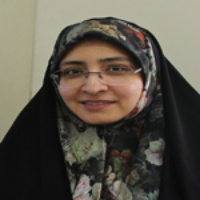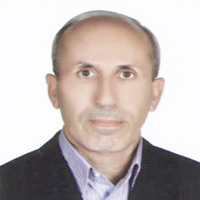Association of food security and body weight status of adult members of Iranian households
Author(s):
Abstract:
Background And Objective
It is usually expected that food-insecure people have an inadequate food intake, less body fat, and body weight. However, several studies in developed countries have shown a higher prevalence of overweight/obesity among food-insecure household members, especially women. This study aimed to assess the association between food insecurity and body weight status and socio-economic factors affecting it in adult members of Iranian households. Materials and Methods
This cross-sectional study was conducted in the framework of the Comprehensive Study on Household Food Consumption Patterns and Nutritional Status of I.R. Iran during 2001-2003. Households were selected by the Iranian Statistical Center by systematic cluster sampling in urban and rural areas. Heights and weights of all household members over 20 years of age (7960 women and 6083 men) were measured based on standard protocols, and body mass index (BMI) was calculated. Weight status (classified into underweight, normal weight, overweight, and obesity subgroups) was defined based on cut-off values recommended by NIH. Socio-economic status (SES) of the household was assessed by a questionnaire through structured interviews. Assessment of food consumption patterns was made using the weighing method and three consecutive 24-hour diet recalls completed by trained nutritionists. Food insecurity (FI) was defined on the basis of daily energy intake (as percentage of WHO/FAO RDA) as follow: mild FI, 80-89% RDA; moderate FI, 70-79% RDA,; and severe FI, lower than 70% RDA. Logistic regression was used to test the simultaneous effects of SES and food security variables on weight status. Results
A total of 7158 households, including 2496 (34.9%) rural and 4662 (65.1%) urban, were included in the study. The findings showed that 5.2%, 7.6%, and 9.9% of them were severely, moderately, and mildly food-insecure, respectively. On the whole, 30% and 34.3% of the men and women were overweight, and 9.9% and 26.7% obese, respectively (P<0.001). Logistic regression in 6083 men did not show any significant association between weight status and food insecurity after controlling for the SES variables. However, overweight increased at higher educational levels, good housing condition (ownership) (P<0.01), and a higher score of facilities in the home (P<0.001) in men. On the other hand, in severely and moderately food-insecure women (n=7960) overweight was 1.5 times (CI: 1.22-1.94 & CI: 1.27-1.88, P<0.001), and in mildly food-insecure women 1.2 times, (CI: 1.04-1.43, P<0.001) that in their food-secure counterparts. Overweight decreased with higher educational levels and increased with being married, urbanization, score of facilities in the home (P<0.001), and better housing conditions (ownership) (P<0.05) in women.Conclusion
Food insecurity is associated with overweight in Iranian women in food-insecure households. This association is not clear in men.Language:
Persian
Published:
Iranian Journal of Nutrition Sciences & Food Technology, Volume:3 Issue: 2, 2008
Page:
41
magiran.com/p595441
دانلود و مطالعه متن این مقاله با یکی از روشهای زیر امکان پذیر است:
اشتراک شخصی
با عضویت و پرداخت آنلاین حق اشتراک یکساله به مبلغ 1,390,000ريال میتوانید 70 عنوان مطلب دانلود کنید!
اشتراک سازمانی
به کتابخانه دانشگاه یا محل کار خود پیشنهاد کنید تا اشتراک سازمانی این پایگاه را برای دسترسی نامحدود همه کاربران به متن مطالب تهیه نمایند!
توجه!
- حق عضویت دریافتی صرف حمایت از نشریات عضو و نگهداری، تکمیل و توسعه مگیران میشود.
- پرداخت حق اشتراک و دانلود مقالات اجازه بازنشر آن در سایر رسانههای چاپی و دیجیتال را به کاربر نمیدهد.
In order to view content subscription is required
Personal subscription
Subscribe magiran.com for 70 € euros via PayPal and download 70 articles during a year.
Organization subscription
Please contact us to subscribe your university or library for unlimited access!



